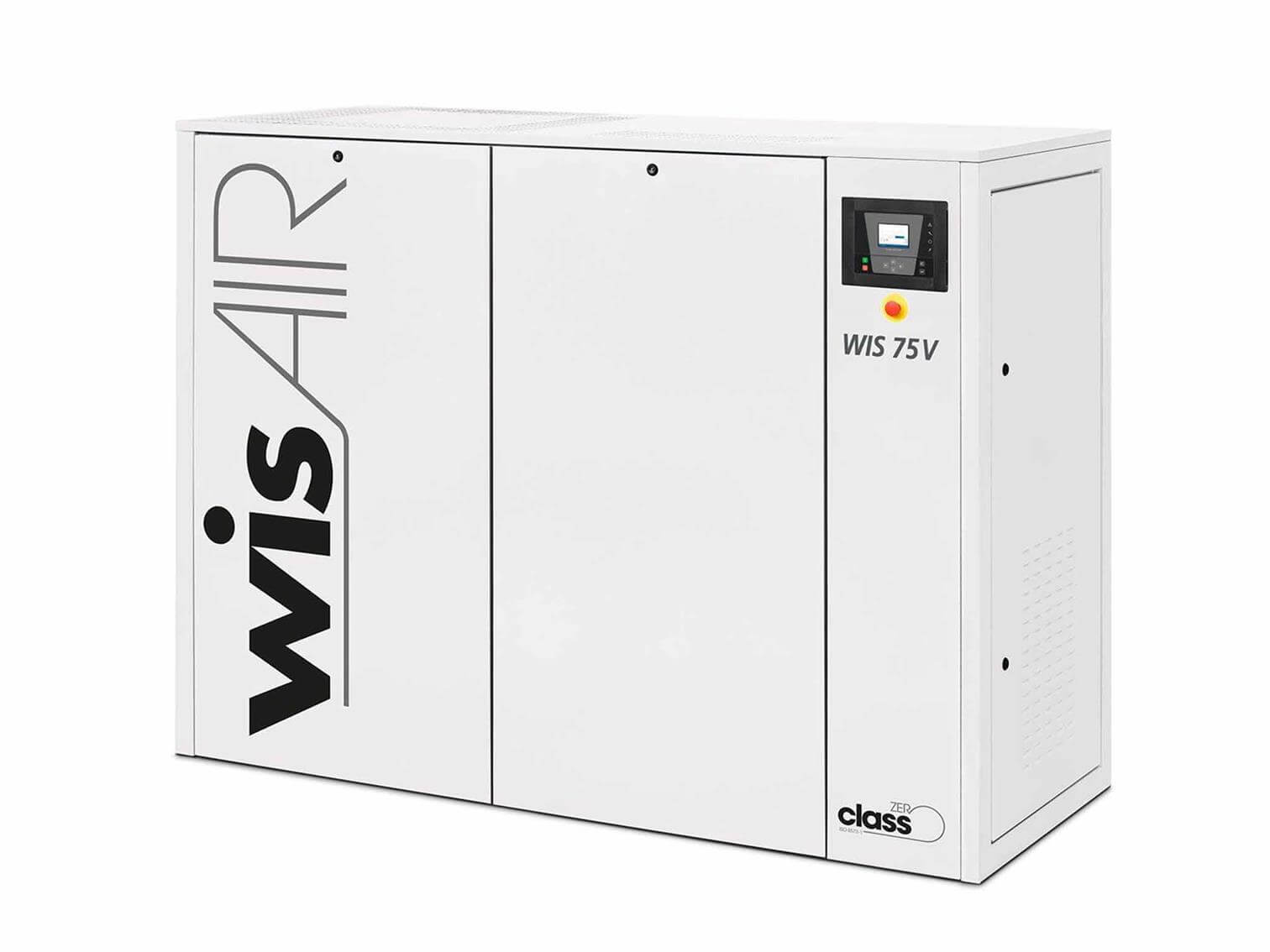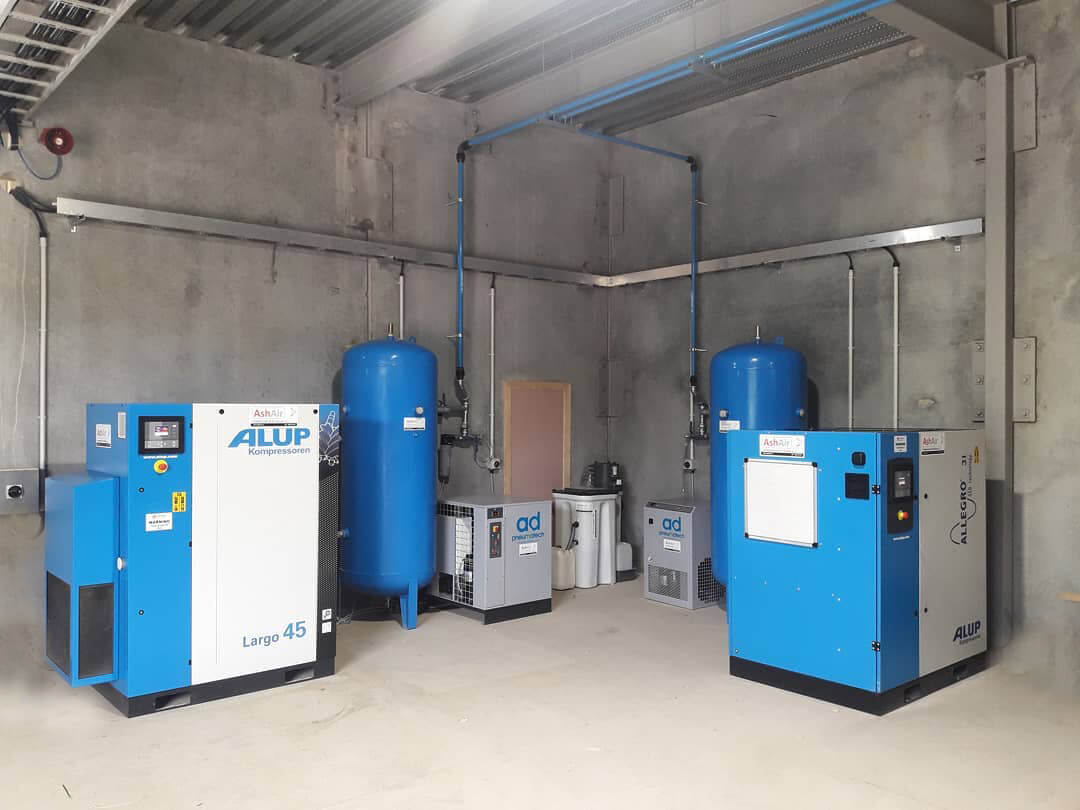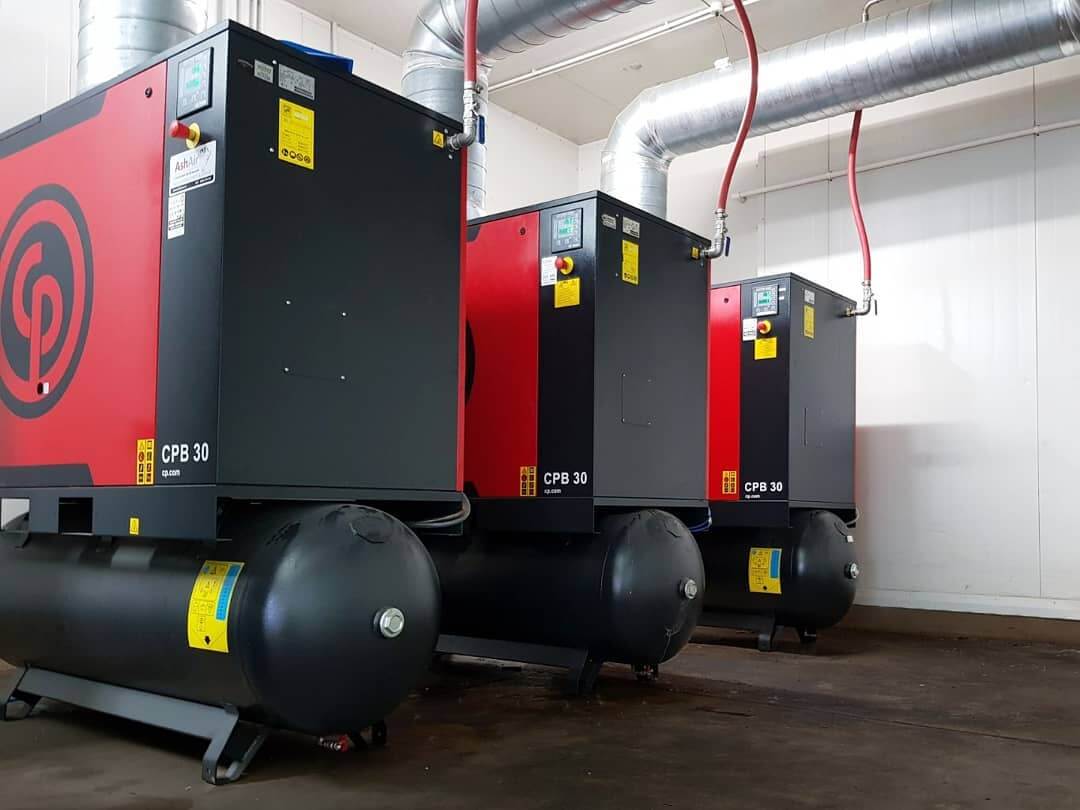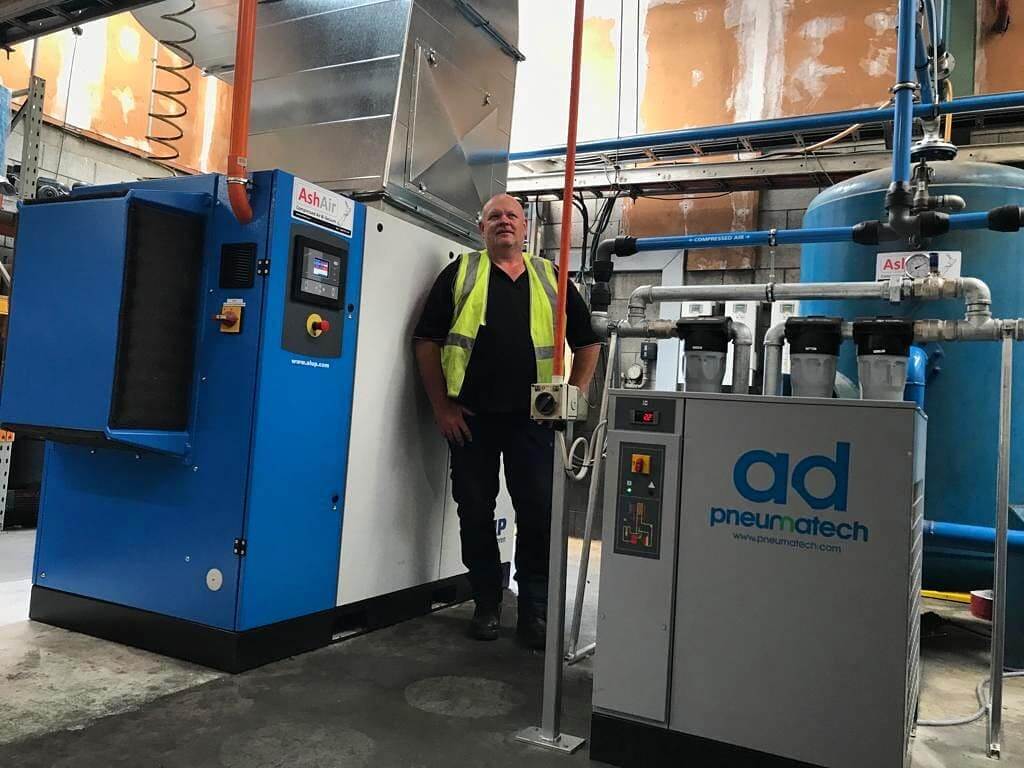Proportioning the Compressed Air Dryer
Trying to figure out which air dryer capacity is best for you? Here are some factors to consider. Read More…
A rotary-screw compressor is an air compressor that uses a rotary-type positive-displacement mechanism, typically used replace piston compressors where large volumes of high-pressure air are needed, either for large industrial applications or to operate high-power air tools.
The principle for a rotating displacement compressor in twin screw form was developed during the 1930s, when a rotating compressor with high flow rate and stable flow under varying pressure conditions was required. The twin screw element's main parts are the male and female rotors, which rotate in opposite directions while the volume between them and the housing decreases.
Each screw element has a fixed, build-in pressure ratio that is dependent on its length, the pitch of the screw and the form of the discharge port.
To attain maximum efficiency, the build-in pressure ratio must be adapted to the required working pressure. The screw compressor is generally
not equipped with valves and has no mechanical forces that cause unbalance. This means it can work at a high shaft speed and can combine a
large flow rate with small exterior dimensions. An axial acting force, dependent on the pressure difference between the inlet and outlet, must
be overcome by the bearings.
The first twin screw compressors had a symmetric rotor profile and did not use any cooling liquid inside the compression chamber. These were called oil-free or dry screw compressors. Modern, high-speed, oil-free screw compressors have asymmetric screw profiles, resulting in significantly improved energy efficiency, due to reduced internal leakage. External gears are most often used to synchronize the position of the counter-rotating rotors. As the rotors neither come into contact with each other nor with the compressor housing, no lubrication is required inside the compression chamber.
Consequently, the compressed air is completely oil-free. The rotors and housing are manufactured with ultimate precision to minimize leakage from the pressure side to the inlet. The build-in pressure ratio is limited by the limiting temperature difference between the inlet and the discharge. This is why oil-free screw compressors are frequently built with several stages and interstage cooling to reach higher pressures.

In liquid-injected screw compressors, a liquid is injected into the compression chamber and often into the compressor bearings. Its
function is to cool and lubricate the compressor element's moving parts, to cool the air being compressed internally, and to reduce the
return leakage to the inlet. Today oil is the most commonly injected liquid due to its good lubricating and sealing properties, however,
other liquids are also used, for example, water or polymers. Liquid-injected screw compressor elements can be manufactured for high
pressure ratios, with one compression stage usually being sufficient for pressure up to 14 and even 17 bar, albeit at the expense of
reduced energy efficiency.
The basic difference between the two technologies can be found right in the name. Fixed speed compressors run at a continuous fixed speed and tend to be very efficient when operating at 100% of its capacity, meaning when the motor is running and compressed air is being manufactured. The inefficiency of a fixed speed compressor is very noticeable and can easily be measured when the unit unloads and stops making air. Before the motor comes to a complete stop, it will continue to run while no air is being produced, consequently wasting energy and money. Inefficiency and waste can especially be visible at facilities that operate multiple shifts and or have great flow demand fluctuation throughout the day.
Variable speed drive (VSD) technology works on a different principle, as it turns the motor at the appropriate speed in relation to the amount of air
that is required within a given plant / facility. In simpler terms, as the need / demand for air increases, so does the speed of the motor, therefore
supplying more flow / CFM. On the other hand, if the demand decreases, the motor will automatically slow down and only use the required energy to provide
appropriate flow. VSD air compressors match the output to the demand that is needed and can sense how much flow is being used, while adjusting its
speed accordingly. On slower production days, break throughout the day, or during second and third skeleton shifts, the VSD technology comes especially
handy, as it eliminates the waste of electricity, therefore saving money.
Considering that compressed air usage is costly, as it accounts for over 70% of Total Cost of Ownership in electricity costs, utilizing VSD technology
can help you achieve savings of 35-50%. Depending on size of the compressor, the savings can range from $100s to $10,000s annually or more, making
it an ideal investment for any facility. VSD air compressors are becoming the norm rather than an exception, with many customer enjoying the annual
energy savings and having the ability to reinvest the money into other assets.


.png)

Ash Air has been around in New Zealand since 1979, and we’ve grown into a nationwide company with international support and a
reputation for quality and reliability.We look after all things compressed air for your business!
Ash Air's range of Chicago Pneumatic, Alup, Pneumatech, and Quincy compressors are used extensively around the world in industries
ranging from oil and gas to food, automotive and farming, and we bring you these world class compressors here in the land of the long white
cloud.Our technicians are compressed air equipment experts and are dedicated to addressing customer needs. Supported by a 13 locations
nationwide, Ash Air offers one of the widest selections of compressed air equipment and parts available today in New Zealand.
With Ash Air compressors, you can count on reliability and high performance for even the most demanding applications. We focus our
efforts on the following:
Talk to the team today:
Proportioning the Compressed Air Dryer
Trying to figure out which air dryer capacity is best for you? Here are some factors to consider.
Read More…
Maintenance budget: 8 factors to consider
Just like any other equipment, a compressed air installation also requires the necessary maintenance work during its entire
lifespan. Even though maintenance costs are only about 5 to 10% of a machine's annual operating costs, failure to budget for
maintenance can have potentially disastrous consequences.
Read More…
The air dyer is one of the most ignored cooler in the system. A dirty condenser will cause water in the lines, or worse it will cause
complete dryer failure.
Read More…
Do you have an idea for our #expertcorner? Let
us know!
Who we are and how Ash Air can help your business!
Reliability and Efficiency
Read more from our #expertcorner